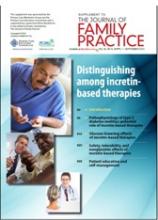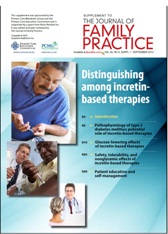Article Type
Changed
Tue, 05/21/2019 - 12:22
Display Headline
Distinguishing among incretin-based therapies
Sponsor
This supplement was sponsored by the Primary Care Metabolic Group and the Prima…
Article PDF
Issue
The Journal of Family Practice - 59(09)
Publications
Page Number
S3-S30
Sections
Article PDF
Article PDF
Sponsor
This supplement was sponsored by the Primary Care Metabolic Group and the Prima…
Sponsor
This supplement was sponsored by the Primary Care Metabolic Group and the Prima…
Issue
The Journal of Family Practice - 59(09)
Issue
The Journal of Family Practice - 59(09)
Page Number
S3-S30
Page Number
S3-S30
Publications
Publications
Article Type
Display Headline
Distinguishing among incretin-based therapies
Display Headline
Distinguishing among incretin-based therapies
Sections
Disallow All Ads
Alternative CME
Consolidated Pubs: Do Not Show Source Publication Logo
Use ProPublica
Article PDF Media
Document

